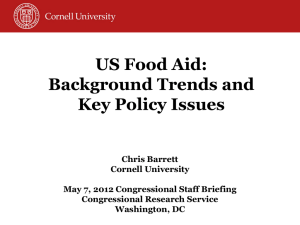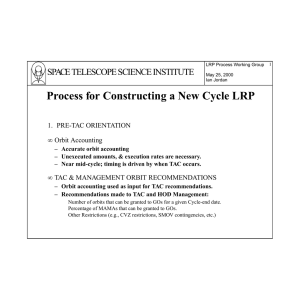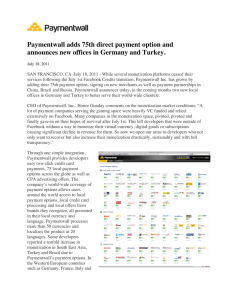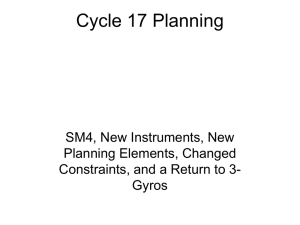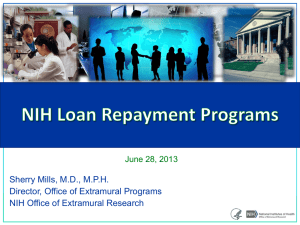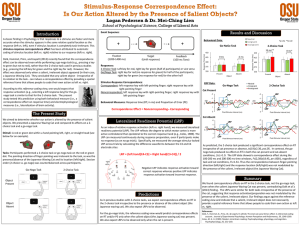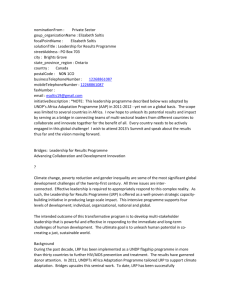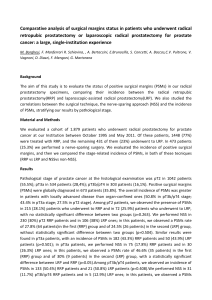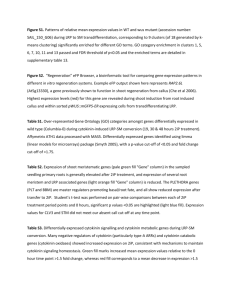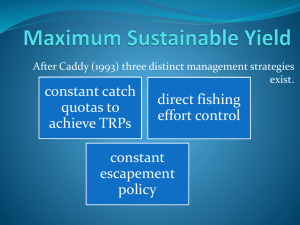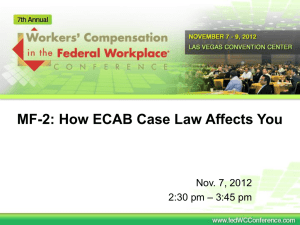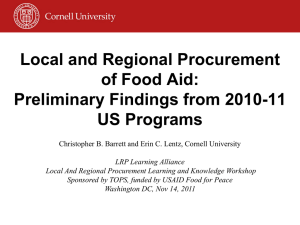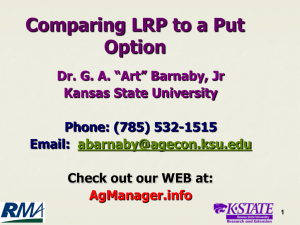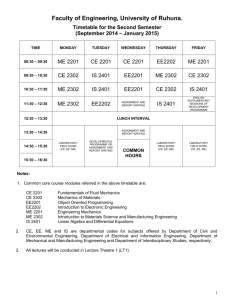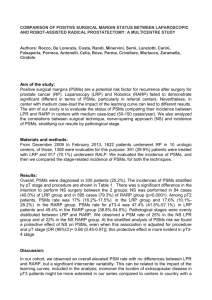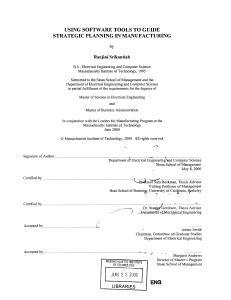The Evolution of US Food Aid
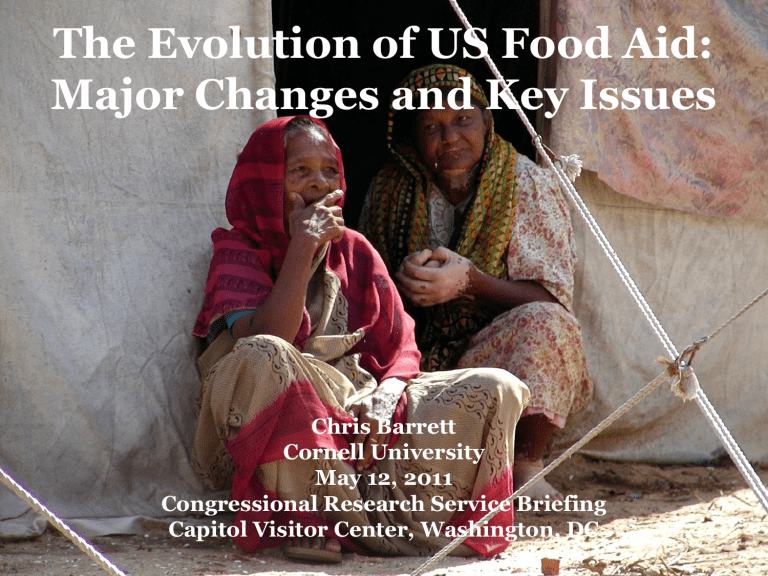
The Evolution of US Food Aid:
Major Changes and Key Issues
Chris Barrett
Cornell University
May 12, 2011
Congressional Research Service Briefing
Capitol Visitor Center, Washington, DC
Food aid in support of
MDG #1
United Nations Millenium Development Goal #1:
Reduce by half the proportion of people (i) living on less than a dollar a day and (ii) who suffer from hunger.
What role for food aid?
- Save lives and fulfill human right to food
- Protect assets (especially human health)
- Facilitate productivity and asset growth where food availability and poor market performance are limiting.
Food aid is a complement to other resources.
Need to embed food aid in broader dev’t strategy, not fit development strategies to food aid policies.
Background
US still accounts for 50-60% of total food aid worldwide each year. US food aid policy drives global food aid system.
4%
7%
2009 Food Aid Flows by Donor
21%
51%
USA
EU (EC + bilateral)
Japan
Canada
Other
17%
Source: WFP Food Aid Information System
Background
1954-1990:
- Generous farm price supports and gov’t held stocks
- Large regions outside North American cereals marketshed
- Hunger widespread globally initially
- Cold War: food aid flowed initially to Asia, Latin America,
Europe and North Africa
PL 480 was a direct response to these conditions and succeeded in meeting some of the resulting goals.
Times have changed.
Major changes
1. Price Supports and Gov’t Grain Stocks History:
1990-present:
- Generous farm price supports and gov’t held stocks ended.
Food aid now purchased rather than shipped from stocks.
- No price impact, yet myth persists b/c people agreement on agriculture (and never really worked anyway).
Major changes
5. Shift From Program to Emergency Food Aid:
Until 1992, most US food aid was “program” – govt-to-govt concessional sales on credit: Title I and Section 416(b)
Now mainly to NGOs (>40%) and WFP/IEFR (>40%) for emergency response (~80% of Title II now emergency)
Now 70% of flows are to Africa, up from ~1/3 in 1990s
Global Food Aid Flows
16.0
14.0
12.0
10.0
8.0
6.0
4.0
2.0
0.0
1981 1983 1985 1987 1989 1991 1994 1996 1998 2000 2002 2004 2006 2008
Emergency Project Program
Data source: WFP INTERFAIS
U.S. Food Aid Programs, FY1980-2009
3500
3000
2500
2000
1500
1000
500
0
1980 1985 1990 1995 2000 2005
PL 480 Title I PL 480 Title II Other (Title III, Food for Progress, IFEP, 416b, etc.)
Data sources: U.S. Dept. Of Agriculture, General Accounting Office, Bureau of Economic Analysis
Major changes
7. Other Donors Reformed Their Food Aid Programs
Budget integration: in Canada, EU and other key donor countries other than the US, food aid moved within international development budgets and out of farm policy and agriculture budgets. This enables allocation based on humanitarian and development criteria.
Untying: In the EU and Canada, the untying of food aid has been, in principle, complete. Cash is commonly provided instead of commodities and recipients can source from anywhere.
Example: when Denmark decoupled, replacing cheese and canned meat food aid with bulk grain, wheat flour, peas and vegetable oil, it generated 6x calories and 3x protein at lower cost, from 1990-1997.
Exception: US has neither budget integration nor significant untying dget integration nor untying.
Key issues
The Golden Hour, LRP and Untying of Procurement:
- Golden Hour principle: rapid response essential. Delays are expensive and deadly (2004-5 Niger example)
- Other than US, more than 80% of global food aid is now LRP because it is typically faster and cheaper than transoceanic shipments.
- Examples:
GAO: 10-country averages in sub-Saharan Africa:
21 weeks for U.S food, 7-8 weeks for LRP
CFGB: Kenya, Ethiopia, & Afghanistan
11-19 weeks for Canadian food, 4-6 weeks for LRP
- Farm Bill still sharply limits LRP in US food aid programs.
- (Expensive) prepositioning the best feasible option now
Key issues
6 Monetization
Insufficient resources for non-emergency development programming makes it difficult to prevent new emergencies and to limit their adverse impact when they do occur.
Insufficient cash resources to meet needs: distorts NGO behavior … monetization is the result. From ~10% of non-emergency Title II in the early 1990s to >60% the past several years.
Monetization is a source of WTO tension (akin to an export subsidy).
Monetization is inherently inefficient.
Can be disruptive to host country markets, undermining efforts to build up local commercial agricultural marketing channels.
Hence:
- CARE’s 2005 decision to phase out monetization.
- The importance of community development funds proposal
Key issues
4. Cargo preference
1954 Cargo Preference Act to support merchant marine for national security purposes … share increased 50-75% in 1985. Plus Great Lakes
Set Aside added in 1996, further restricting shipping.
Impact: higher freight costs. ACP resulted in a 46% markup over competitive freight costs.
70% of ACP vessels not militarily useful, yet these capture >90% of cargo preference premiums.
And ~40% go to foreign shipowners.
Pentagon/MARAD have an alternate program (Maritime Support
Program) to maintain sealift capacity
Key issues
Budget Integration
Especially if US food aid programs are formally focused solely on humanitarian and development objectives, bring all programs under
USAID and foreign relations/development.
Bureaucratic duplication between USDA and USAID is costly and unnecessary and invites criticism and skepticism (e.g., in WTO).
IDA and EFSA as an example of how this can work.
Key issues
International Food Assistance Governance
Food Aid Convention and FAO/CSSD ineffective – need to revise membership, accounting and adopt codes of conduct
FAC presently being renegotiated
FAO/CSSD could be shut down immediately with no loss
Conclusion
Food aid remains important as part of the “twin track” strategy found in the 2009 Rome Principles.
US still leads the global food aid system.
But much has changed … the next Farm Bill is dealing with a radically different food aid program than what the US had 20 years ago.
Improving awareness of changed landscape will help build the coalitions necessary to tackle key remaining issues:
- LRP
- Monetization
- Cargo preference
- Budget integration
- Food assistance governance
